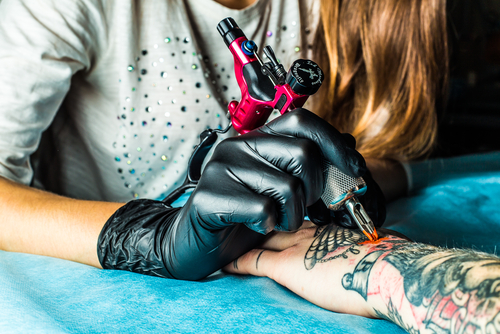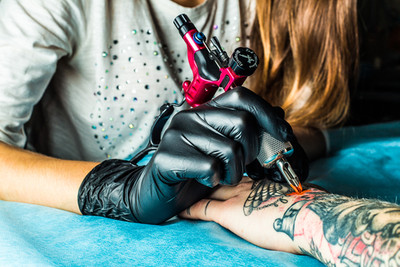How Tattooing Works?
Numbskin on 2018 Nov 22nd
You would usually come across people saying and criticizing the youth about the new culture of tattooing, but very little they know that Tattooing has been a part of mankind's cultural history for more than thousands of years. Do you know what possibly can fall in common between Ötzi the Iceman, Tofi women of New Guinea, and Kat Von D? The 5300-year-old Ötzi, the health riddled hunter who was mummified by his civilization and was found preserved in a glacier in the Ötztal Alps, has 61 tattoos located near his joints. Historians say that the tattoos suggest a treatment was been done on him, through the tattoos to treat arthritis. The family lineage was described in some sort of patterns on the faces of Tofi women, and Kat Von D, a popular American tattoo artist and reality TV star, holds the Guinness World Record for most tattoos given to a single person in 24 hours: a whopping 400!

Getting Ink into the Skin
You can call it needling or tattooing, the permanent tattoos are done by injecting an ink into the skin by needles. The process of tattooing starts with a tattoo needle that punctures the skin and cause a tiny wound. The body's healing officers start responding the moment it is punctures by sending macrophages to close the wound and swallow up any foreign invaders. When it comes to tattoo ink, the pigment, the ink particles are pretty large for the macrophages to destroy and thus they get stuck in the dermis.
So probably it is like if you have a very strong immune system, and if it succeeds in breaking up the pigment particles then the hard earned tattoos will fade eventually.
Now when you go for a tattoo removal, you will have to go under the laser where it targets a single color in the tattoo and will break the pigment particle into smaller parts so that the defending blood stream will carry it along and the macrophages handle the rest.
What’s in Tattoo Inks?
Tattoo inks consist of a colorant and a carrier. The fluid that is used to transport the colorant is called the carrier and it contains glycerine, water, isopropyl alcohol, and witch hazel.
The tattoo colorants are the basic pigments that are made up of intense color compounds that reflect light in the visible region of a light spectrum and it also opposed to dyes that require a physical or chemical interaction so that it can anchor at a place. The dyes are supposed to suppose to react with the surface of a skin so that they can develop their color and stay in a place. Inversely, the pigments supply color that do not react into a chemical reaction and act to hold in place by the principles of intermolecular or physical forces.
As per the history of tattoos, pigments that were used in the tattoo inks used to be derived from mineral or from the geological sources to bring out the desired colors and hues. The black ink was extracted from carbon and iron oxide. Cinnabar the mercury sulphide compound would bring the red hues and Cadmium compounds like cadmium red (CdSe) or cadmium yellow (CdS or CdZnS), were used to produce shades of red, orange, and yellow.
It has been 20 years since the ink manufacturers have parted their ways from mineral-based pigments to organic one. The 80% of the colorants that are used in the present age are mainly carbon based and around 60% of the organic pigments are azo pigments and 30% of the pigments and dyes have been approved for cosmetic use while a number of other has been restricted to originally developed for industrial applications like paints or textiles.
The ink also contains a number of additives like surfactants, binding agents, fillers, and preservatives. These additives are put in use to keep the pigments in a symmetric uniform suspension to avoid any sort of micro-organism growth in the product.
Basic Potential Degradation Pathways for Azo Pigments

The Azo compounds go under reactions that cause a compound to cleave into an aromatic amines. All the degradation products like aniline, anisidine, and toluidine, have been identified as potential carcinogens.
For example, solvent Red 1 can cleave at the N=N bond:
After all these if you are thinking of the pain it offers you, welcome to the 21st century and the science does have a solution for you. The tattooing is associated with immense pain, so it is advised to make a use of NumbSkin- a topical anesthetic numbing cream effective enough to get rid of the pain. You can always buy it online or it is easily available in medical stores near you, and thus you can now literally know what to look in tattoo and in the tattoo process.







